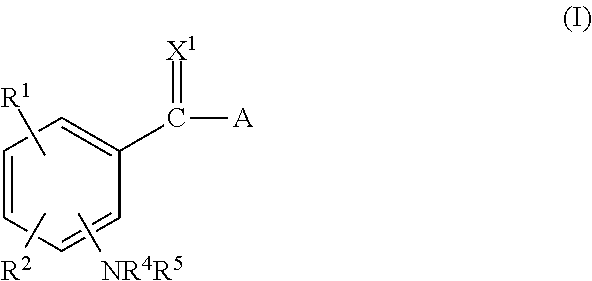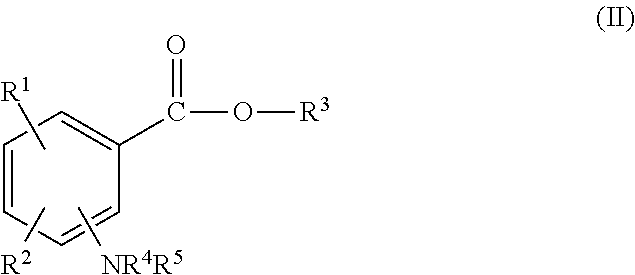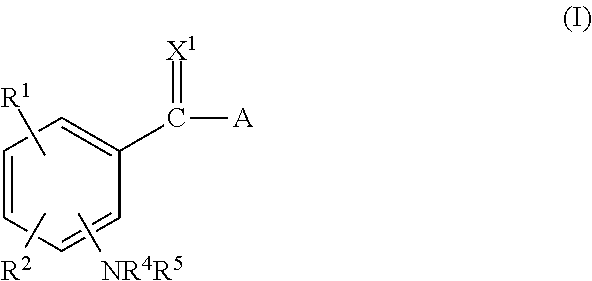Aminobenzoic Acid Derivatives
a technology of benzoic acid and derivatives, applied in the direction of additives, lubricant compositions, liquid carbonaceous fuels, etc., can solve the problems of incomplete combustion of fuel in devices, less effective use of lubricants, and less effective use of engine oil, so as to boost the tbn
- Summary
- Abstract
- Description
- Claims
- Application Information
AI Technical Summary
Benefits of technology
Problems solved by technology
Method used
Image
Examples
specific embodiment
[0059]The invention will be further illustrated by the following examples, which sets forth particularly advantageous embodiments. While the examples are provided to illustrate the invention, they are not intended to limit it.
example 1-a
[0060]Synthesis of 4-(dimethylamino)benzoic acid decyl ester. A one-liter, four-necked, round-bottom flask, equipped with an overhead stirrer, sub-surface gas inlet tube, thermowell, Dean-Stark trap, and Friedrick's condenser, is charged with 316.3 grams (2.00 moles) of 1-decanol and 30 grams of solid Amberlyst-15 catalyst. The flask is purged with nitrogen and warmed to 120 degrees C. before 165 grams (1.00 mole) of 4-(dimethylamino)benzoic acid is added portion-wise over 10 minutes. Evolved water is condensed in the Dean-Stark trap. The mixture is stirred at 150 degrees C. for 6 hours and filtered hot using 50 grams of Fax-5 to remove any particulates. The filtrate is reheated to 150 degrees C. for 1 hr under vacuum (<40mmHg) to remove excess alcohol. The mixture is cooled to yield the desired product, in the form of a brown liquid.
example 1-b
[0061]Synthesis of 4-(dimethylamino)benzoic acid decyl ester. A one-liter, four-necked, round-bottom flask, equipped with an overhead stirrer, sub-surface gas inlet tube, thermowell, and Friedrick's condenser, is charged with 200.0 grams (1.26 moles) of 1-decanol and 3.34 grams (24.3 mmoles) of solid potassium carbonate. The flask is purged with nitrogen and warmed to 120 degrees C. before 179 grams (1.00 mole) of 4-(dimethylamino)benzoic acid methyl ester is added portion-wise over 10 minutes. The mixture is stirred at 150 degrees C. for 6 hours and filtered hot using 50 grams of Fax-5 to remove any particulates. The filtrate is reheated to 150 degrees C. for 1 hr under vacuum (<40mmHg) to remove excess alcohol. The mixture is cooled to yield the desired product, in the form of a brown liquid.
PUM
 Login to View More
Login to View More Abstract
Description
Claims
Application Information
 Login to View More
Login to View More - R&D
- Intellectual Property
- Life Sciences
- Materials
- Tech Scout
- Unparalleled Data Quality
- Higher Quality Content
- 60% Fewer Hallucinations
Browse by: Latest US Patents, China's latest patents, Technical Efficacy Thesaurus, Application Domain, Technology Topic, Popular Technical Reports.
© 2025 PatSnap. All rights reserved.Legal|Privacy policy|Modern Slavery Act Transparency Statement|Sitemap|About US| Contact US: help@patsnap.com



